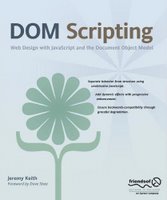Panel with Roger Johansson, Rachel Andrew and Dave Shea.
Always use basic vanilla CSS and HTML files as your starting point for any project. Then work on repurposing this to suit your bespoke application. This gives you a basic framework on which to build each time. Ref: undohtml.css (google for it or go to the end of this page) zaps all of the default browser formatting. Tantek developed it. Use to copy and paste into all new projects.
Next, stuff in the markup and some greeked content and validate
How to break up multiple CSS files
Several ways to do it, including:
- by typography, colours, layout (clear:left does this I think)
- Rachel puts most of her css in one file and pulls out the hacks into a separate one.
- Divide the sheet up with comments when its more complex.
- If its a very big sheet - put a Table of Contents at the top with these sort of comments /* page:=Header */ - as CTL-F will find "=name" very easily (equals not otherwise used in the CSS markup so you won't end up with spurious finds).
- Dave breaks it up into sections: global nav; sidebar nav; basic html; then will use a separate file for a specific section such as the shopping cart function - he finds it easier to find things again afterwards.
- List colours @ top of stylesheet in a comment - that way its much easier to do a global search and replace if needed.
One problem arises when you edit a stylesheet - you might rid the markup of a div, but rarely do you then weed out the associated css in the stylsheet - so it can end up rather bloated with old stuff you're no longer using. Try and use some sort of methodology to see if you can rid yourself of the extras.
Using Dreamweaver & Contribute in a collaborative environmentSome partcipants have DW and Contribute, and break the CSS up so that the typography is in one sheet which the dumb users can see - Contribute users will be able to apply these styles when choosing from their CMS, and so won't apply a page structure style to something that would blow up. The human factor has to come into play - there's no right or wrong way - you may choose to have one stylesheet for a small site, but split it up for a CMS-driven one.
COMMENT the CSS so you know what's what - its boring but very necessary when you come back (or someone else does) six months later and you can't remember what you did! Dave also finds it useful to comment the markup with div ends such as as you're not always sure which is the closing </div> tag (felt smug as I've already started to do that!).
- ALWAYS ALWAYS comment Hacks so you remember why they're there. Useful to include the download/explanation URL in there too, for your future reference.
- IF you use comments to break up the CSS, use lots of TABs to shift them over to the RHS - they are much easier to scan for quickly that way.
- If you are a large team, comment the CSS with your name and the date when you make changes
Class/id Naming ConventionsStick to a scheme, be consistent across projects so you are not left looking for something months later (also stems from using one vanilla template to seed each project). Use names such as
.sidebar, #navigation, .menu ie keep the name structural rather than related to how it looks. If there were rigid or ideal naming conventions, it would be great for accessibility as users could then more easily override a given style on a page - but that's Utopia, it ain't gonna happen.
You can (if you're clever) use Server-side scripting to change styles on the fly, but none of the panel had much experience of that.
Code OrderWithin your CSS, try and be structural about your layout order - start with wrapper, header, then the rest.
Pick an order that makes sense for global sheets, or global, generic then section-specific.
Within a rule, try and stick to a set order for properties (its just good organisation, doesn't make any difference);
position, float, colour, text align etc.
Specifity- when using rules which override previous ones directly, try and put them near each other, if possible, so you're not hunting all over the stylesheet. - you can still see the styles which will override the properties.
Or group by elements - H1, H2,... Li...<a href> etc.
ToolsText editors are OK! Or Topstyle, Firefox Web Developer toolbar (switch sheets on and off stupidly easily) .
TestingBrowsercam - its just like having multiple boxes running different browsers (VM ware?)












